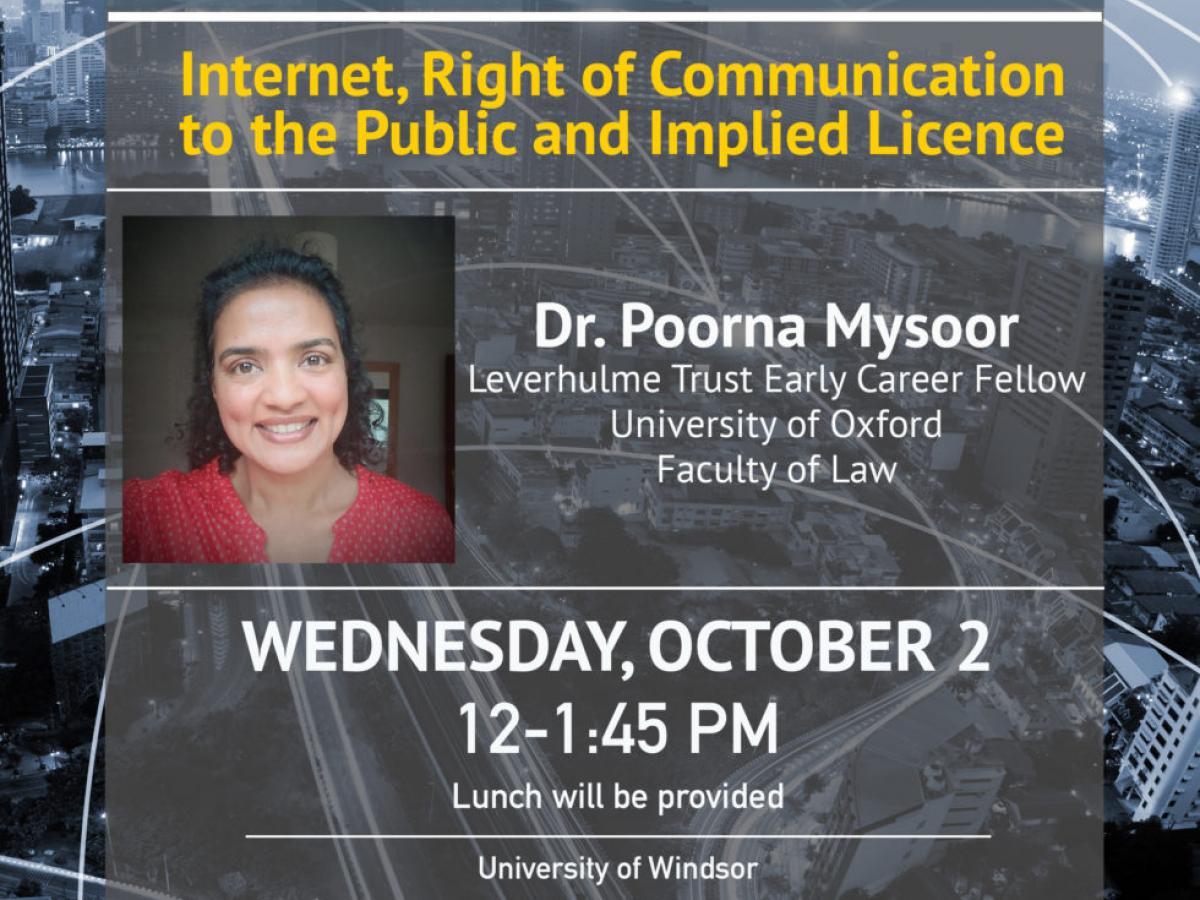LTEC Lab, Faculty of Law, University of Windsor hosts a seminar by Dr Poorna Mysoor

Dr Poorna Mysoor’s research focuses on the interface between intellectual property law and private law. In this vein, her doctoral thesis was on the common law doctrine of implied licences in copyright law, where she brought in contractual and property law principles to inform a methodology for implying copyright licences, with an aim to balance certainty and flexibility. Poorna is currently working on the manuscript to turn her doctoral thesis into a monograph, which will be published by Oxford University Press in 2020. One of the most important aspects of implied licences is its application to the issues on the internet. Her presentation builds on her upcoming monograph.
Internet has become an inseparable part of modern life. While internet has revolutionised our relationship with the information world, playing a significant role in realising values such as free speech and access to information, internet has also been instrumental in proliferating access to content that infringes copyright. Despite the internet’s prominence in our lives for about two decades now, the legal response to some of the challenges it poses to copyright content has been slow and patchy.
To a large extent, access to infringing content on the internet is influenced by the manner in which the right of communication to the public is interpreted. It is somewhat baffling to witness how frequently the right of communication to the public is litigated before the Court of Justice of the European Union, and even more baffling is the ever-smaller fixes that the Court gives each time. The right of communication to the public has been given a reading far removed from the statutory language used resulting in an incoherent body of law, while the new Digital Single Market Directive also tries to tinker with this exclusive right.
With this as the background, Poorna’s presentation explores whether the flexibilities ingrained in the doctrine of implied licence can be pressed into service to make sense of the right of communication to the public. On the back of a robust methodology guiding the implication of a copyright licence, her presentation explores the extent to which implied licences can deal with the access to infringing content on the internet in a way that brings about a better balance among the interests of various stakeholders.

